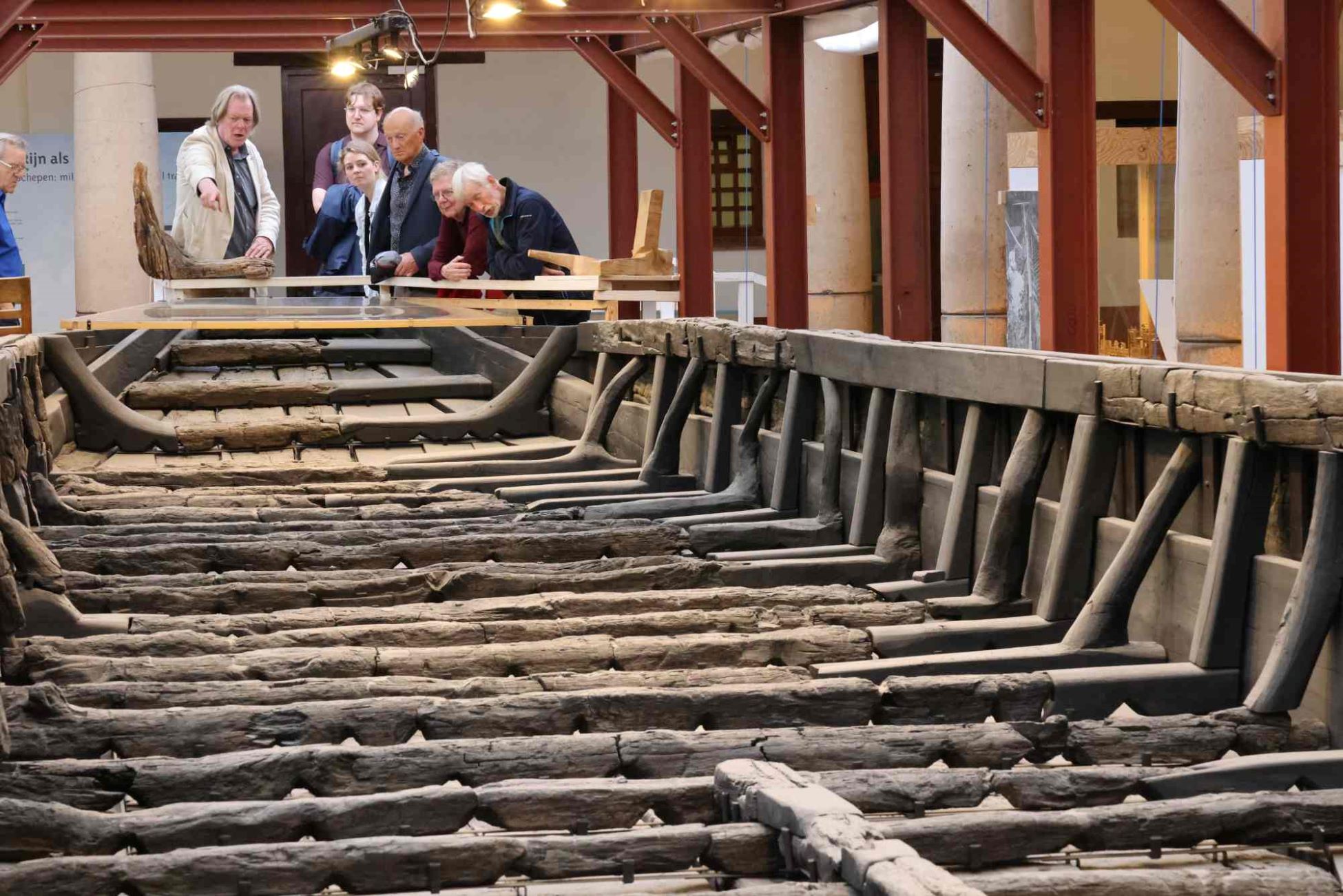
Archaeologist Tom Hazenberg seeks the frontiers of the Roman Empire
From Roman ships to the ‘Gordon’ cavalry mask. Alumnus Tom Hazenberg was involved in spectacular finds that put the Dutch frontiers of the Roman Empire on the map. His mission is to give heritage back to the people. How is he doing that?
‘The military frontier of the Roman Empire now connects people and eras’
Leiden archaeologist Tom Hazenberg no longer digs in the ground with his trowel. He runs his own research consultancy, organises excavation projects and advises government agencies. And this year he became the archaeological coordinator of Nederlandse Limes Samenwerking, an organisation protecting the Roman frontier, which has been granted UNESCO world heritage status.
What makes the Roman frontier so fascinating?
‘In the Netherlands, the Limes, the Latin for frontier, runs along the Rhine: from Katwijk via Leiden to Nijmegen and then through Germany. In this border region, soldiers in forts defended the Roman Empire from German tribes. In 2021, this border with its countless finds like forts, weapons, roads and ships, gained UNESCO status. What’s nice is that the 7,000-kilometre-long border – which ran through Europe, Asia and North Africa – used to be a hard-fought barrier but now connects 26 countries and different eras. We manage this site and try to understand its significance and raise public awareness of it.’
-

Matilo Park with the reconstructed watchtowers. Photo: Bic -

Hazenberg is supervising the restoration of the Zwammerdam ships at Archeon. Photo: Willem de Jeu
How do you do that when often nothing can be seen on the surface?
‘We use presentations and reconstructions to bring history to life. Leiden’s Matilo Park has a brilliant above-ground reconstruction, complete with guard towers and earthworks, of the Roman fort that is underground there. Another example is the Roman ships found near the village of Zwammerdam in the Municipality of Alphen aan den Rijn. The ships were built in the first three centuries AD. They have been restored and partly reconstructed and can now be seen at Museumpark Archeon. It’s an enormous project, with many volunteers having worked on it for years. Then people start to feel that world heritage belongs to them too.’
Classics and Archaeology
Tom Hazenberg (1963) studied the Classics in Leiden, but ended up in archaeology. ‘One part of my programme was Classical Archaeology and I wanted to take part in a dig in Italy. But I first had to do a year of methods and techniques on the Archaeology programme in Leiden. I ended up using all my elective credits for archaeology courses and took part in all sorts of digs in the Netherlands such as burial sites. I developed a real taste for it.’

Any more examples?
‘The Zwammerdam ships were found on the grounds of the Ipse De Brugge care home for people with a disability. There is now a visitors centre on the grounds detailing this discovery, and the residents help out there. I always look for stories that can help us connect with society. The history of the Roman Empire is full of stories of power, control and trade, and they are still relevant now.’
What finds made the biggest impression on you?
‘Two favourites spring to mind. The first was a stunning horseman’s mask, dubbed Gordon [after Dutch singer Gordon, Ed.]. I was the project leader at the excavation in Matilo Park when a colleague (field technician Rob Lutten, Ed.) found the bronze mask in an old canal bed on 2 October 1996. A bit of a drama for me because at that precise moment, I was helping a friend decorate the Bonte Koe café for the Relief of Leiden celebrations and my phone kept ringing but I didn’t answer. When I finally did, I headed there straight away. Finds like that definitely add a real buzz to projects. Matilo received a tremendous amount of attention from academia and the general public.’
‘A find that had an even greater impact on me was the discovery of a Roman ship, the “Woerden 7”, in 2003. I was there when the first piece of wood appeared. We thought it was a medieval quay but it turned out to be a Roman ship, just like the ones at Zwammerdam. We are now working hard to display them in a new National Roman Shipping Museum in Archeon. These kind of discoveries reveal so many new insights about shipbuilding and transport at the time.'
Text: Linda van Putten
Banner photo: Willem de Jeu
